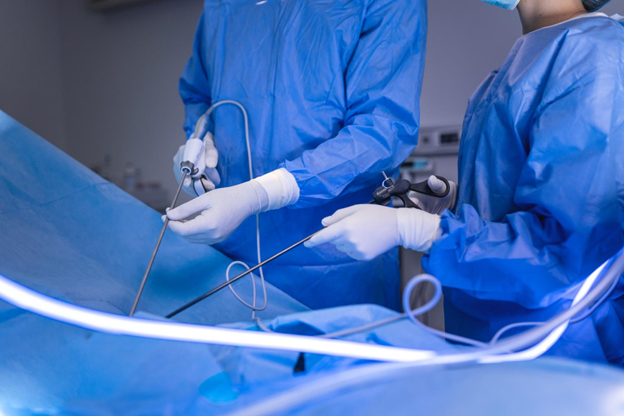Introduction
A hysterectomy is a surgical procedure in which the uterus is removed. It may be recommended for various medical reasons, including uterine fibroids, cancer, endometriosis, or uncontrollable bleeding. While hysterectomy is a common and effective treatment, the traditional method of surgery is invasive and requires a longer recovery period.
Laparoscopic hysterectomy, also known as minimally invasive hysterectomy or keyhole surgery, is a modern alternative that offers several advantages over traditional surgery. In this blog, we will explore what laparoscopic hysterectomy is, its benefits, and how it is performed.
What is Laparoscopic Hysterectomy?
Laparoscopic hysterectomy is a minimally invasive surgical procedure used to remove the uterus. Unlike traditional open surgery, which requires a large incision in the abdomen, laparoscopic surgery involves small incisions through which a camera and surgical instruments are inserted. The surgeon then removes the uterus using specialized tools, guided by the camera.
There are several types of laparoscopic hysterectomy:
- Total Laparoscopic Hysterectomy (TLH): Both the uterus and cervix are removed.
- Laparoscopic-Assisted Vaginal Hysterectomy (LAVH): The uterus is removed through the vagina, but laparoscopic assistance is used for better visualization and precision.
- Supracervical Laparoscopic Hysterectomy: Only the uterus is removed, and the cervix is left intact.
Benefits of Laparoscopic Hysterectomy
Laparoscopic hysterectomy offers several advantages over traditional open surgery:
Smaller Incisions:
The smaller incisions used in laparoscopic surgery result in less trauma to the body, reduced scarring, and a more cosmetically appealing outcome.
Shorter Recovery Time:
Recovery from a laparoscopic hysterectomy is typically faster than from an open procedure. Most patients can return to normal activities within 2-4 weeks, compared to 6-8 weeks for traditional surgery.
Less Pain:
Due to the smaller incisions, patients often experience less postoperative pain and discomfort, requiring less pain medication.
Lower Risk of Infection:
With smaller incisions, the risk of infection is significantly reduced compared to open surgery, where larger cuts are made.
Shorter Hospital Stay:
Many patients undergoing laparoscopic hysterectomy can go home the same day or after an overnight stay, reducing the need for prolonged hospitalization.
Faster Return to Work:
The quicker recovery time means that many women are able to return to work and normal activities sooner than with traditional surgery.
How is Laparoscopic Hysterectomy Performed?
Laparoscopic hysterectomy is performed under general anesthesia. The surgeon typically follows these steps:
Incision: Small incisions are made in the abdomen (usually 3-4) through which a laparoscope (a thin tube with a camera) and surgical instruments are inserted.
Visualization: The camera provides a clear view of the internal organs on a monitor, allowing the surgeon to guide the procedure accurately.
Removal of the Uterus: The uterus is carefully removed using specialized instruments. In some cases, the uterus may be broken down into smaller pieces to facilitate removal through the incisions.
Closing Incisions: Once the procedure is complete, the incisions are closed with sutures or staples.
Risks and Considerations
While laparoscopic hysterectomy is a safe procedure, like all surgeries, it carries some risks, including:
- Infection
- Bleeding
- Injury to surrounding organs (bladder, intestines)
- Blood clots
It is essential to discuss the risks and benefits with your surgeon before proceeding with surgery.
Conclusion
Laparoscopic hysterectomy is a modern, minimally invasive alternative to traditional hysterectomy surgery. With benefits such as shorter recovery times, less pain, and smaller incisions, it has become the preferred method for many women requiring a hysterectomy. If you are considering this procedure, consult with your gynecologist to determine if laparoscopic hysterectomy is the best option for your medical needs.
Consult us today at Brundavan Nursing home for expert guidance!

